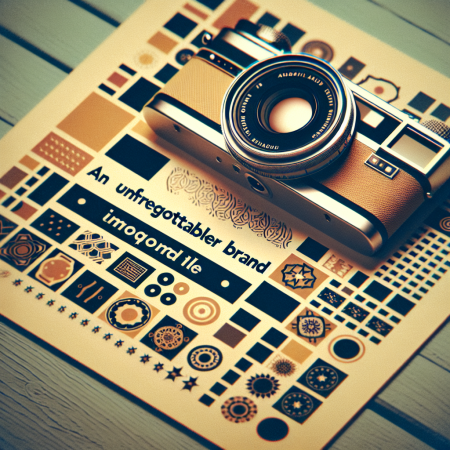The Category Design Approach That Made My Brand Unforgettable
Understanding Category Design
What is Category Design?
Whenever I discuss brand creation, I often emphasize the concept of category design. It’s an approach that goes beyond traditional branding; it’s about creating a new space in the market. Instead of just trying to fit in, you create a category that you can dominate. This isn’t just theory—it’s been vital in my own experiences. When you think of Apple, for instance, they didn’t just make computers; they made personal technology a whole new category.
Category design forces you to get out of the echo chamber of competition. Rather than seeing what everyone else is doing and simply trying to do it better, you’re tasked with reimagining the game itself. You’re not just selling a product; you’re shaping consumer perceptions and desires in a way that sets your brand apart.
The beauty of category design lies in its scalability. Once you establish a clear category, it opens up avenues that can allow you to branch into related areas effortlessly. This has been a game-changer for my own ventures, enabling them to grow in unexpected ways.
Identifying Your Unique Value Proposition
Finding Your Niche
One of the first things I did in my branding journey was to identify what made my offering unique. This is your unique value proposition (UVP), and it’s crucial. Without a strong UVP, why would anyone choose your product over countless others?
Start by analyzing the competitive landscape. What does everyone else offer? What gaps can you fill or what pain points can you address? Spend time immersing yourself in the feedback from potential customers; they often reveal the insights that can guide you towards your UVP.
My experience taught me that a UVP isn’t just about being different; it’s about being meaningful. Connecting with your audience on an emotional level is what drives loyalty. If you can express how your product improves lives in a distinct way, you’re building a lasting brand.
Creating a Compelling Narrative
The Story Behind the Brand
Humans are wired for stories. I realized early on that if I wanted to engage my audience deeply, I needed to craft a compelling brand narrative. This narrative isn’t just marketing fluff; it’s the backbone of how people perceive your brand.
Start your narrative by asking: what inspired you to create your product? Was there a personal struggle or a lightbulb moment? By sharing these experiences, you can forge a deeper connection with your audience. Authenticity is key; people can sniff out a disingenuous story from a mile away!
A great brand story evolves with your business. As new challenges arise, so should your narrative. Embrace changes that reflect growth and adaptation, ensuring your brand story remains relevant over time.
Building an Engaged Community
Connecting with Your Audience
Building a community around your brand is one of the most rewarding yet challenging parts of the category design approach. It’s not just about selling a product; it’s about fostering relationships and creating a movement. When I focused on engaging with my audience, I witnessed firsthand how loyal customers turned into brand advocates.
Start by leveraging social media platforms to communicate openly with your audience. Respond to comments, share user-generated content, and show appreciation for your community. This two-way dialogue builds trust and creates a sense of belonging.
Encouraging feedback is crucial. The conversations I’ve had with my audience have led to invaluable insights and enhancements for my products. The more you involve your community in the journey, the more invested they become in your brand’s success.
Continuously Innovating
Adapting to Market Changes
The market is always shifting, and I quickly learned that staying stagnant is not an option. Adapting and innovating has helped keep my brand relevant and exciting. Continuous innovation doesn’t mean you have to reinvent the wheel every time; it can also be about refining what already exists.
I encourage you to regularly assess your products and services. Are there improvements you can implement? Are you listening to customer feedback and adapting accordingly? Small tweaks can often lead to significant enhancements and better customer experiences.
Stay ahead of trends by keeping a pulse on your industry. Attending conferences, networking with peers, and immersing yourself in relevant content are excellent ways to stay informed. Innovation fuels brand longevity—it ensures that your audience always has something to look forward to!
Conclusion
The category design approach can transform how you view and grow your brand. By focusing on creating a new space in the marketplace, establishing a compelling narrative, engaging with your community, and continuously innovating, you can make your brand unforgettable. Embrace these strategies, and watch as your brand evolves and thrives!
FAQ
What is category design?
Category design is the practice of creating a new and unique market space where your brand can flourish. It involves defining not just what your product is but also reshaping consumer perceptions and desires.
How can I identify my brand’s unique value proposition?
To find your UVP, analyze competitors, identify gaps in the market, and immerse yourself in customer feedback to discover what makes your offering stand out.
Why is storytelling important in branding?
Storytelling forms the emotional backbone of branding. It helps you connect with your audience on a deeper level, allowing them to relate to your brand’s journey and mission.
What are effective ways to build a community around my brand?
Utilize social media for engaging directly with your audience, encourage feedback, and create a space where customers feel valued and invested in your brand’s success.
How can I ensure my brand stays innovative?
Regularly assess your offerings based on market feedback, stay informed about industry trends, and be willing to adapt your products and strategies to keep your brand relevant and exciting.


